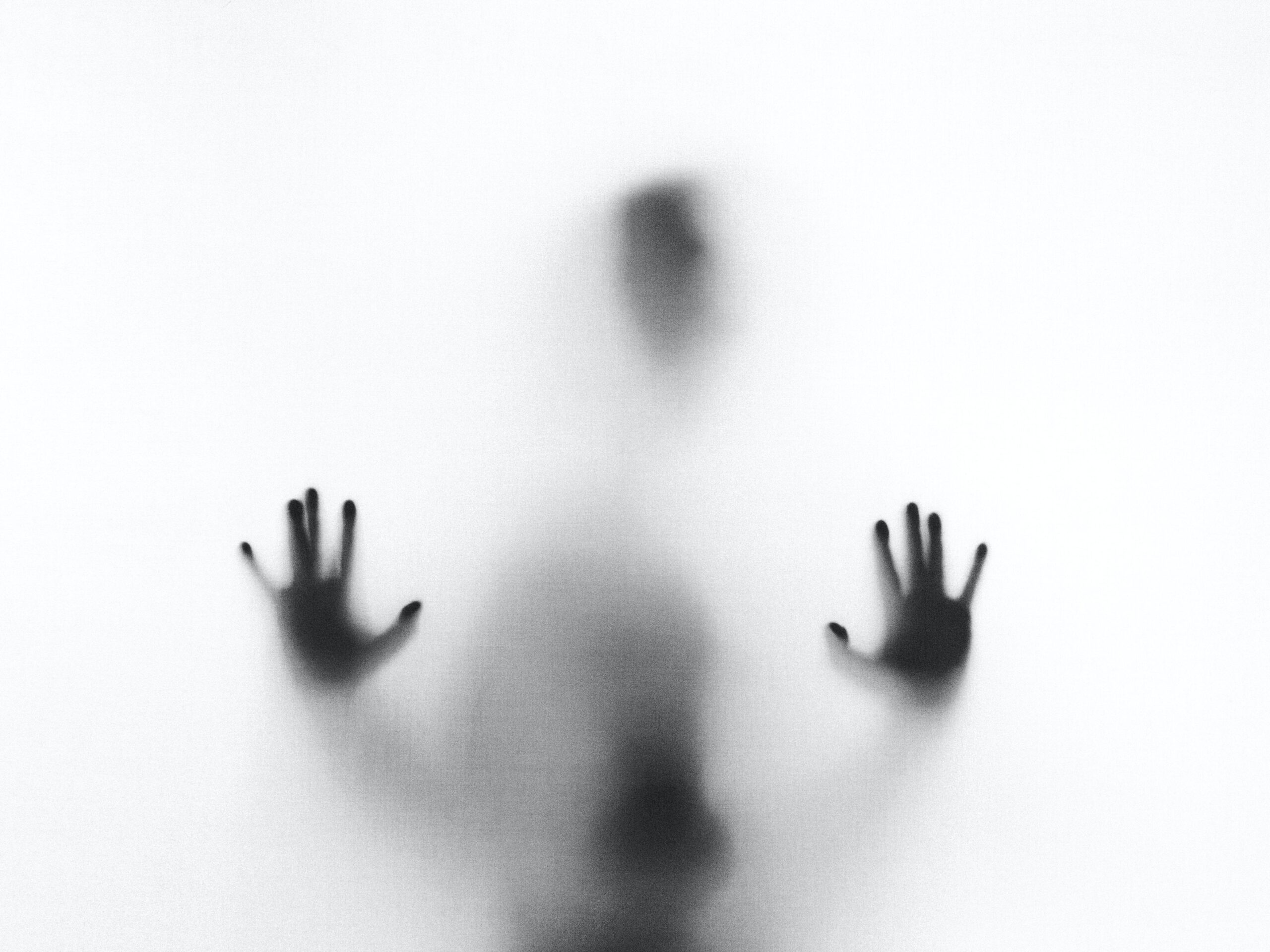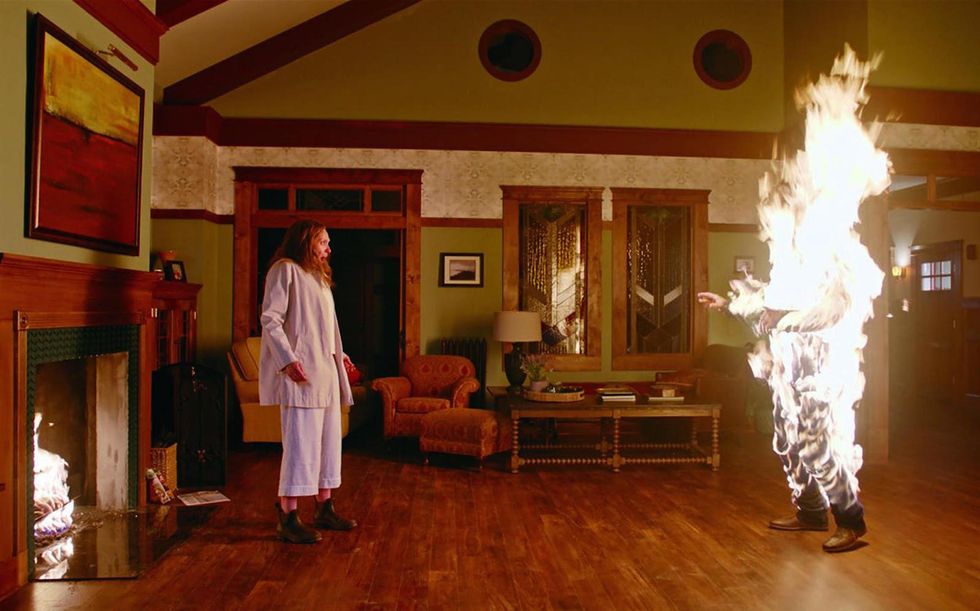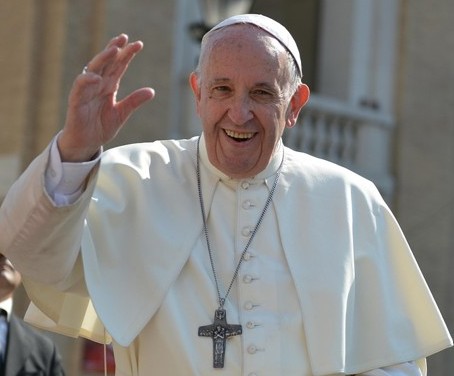
In 2022’s Scream — the fifth installment of the meta slasher franchise — the new killer, like all the predecessors, likes to play with his food before eating it. As a throwback to 1996’s Scream, he primes his target victim by asking her about her favorite horror movies.
For any horror fan, it’s a bit of a dream. Sure, I’ll talk to anyone who will listen about Halloween or Friday the 13th for hours, but the lead actress isn’t the biggest fan of the horror classics that dominated the conversations in earlier films.
What is elevated horror?
“Scary but with complex emotional and thematic underpinnings” sans the “schlocky cheeseball nonsense with wall-to-wall jump scares” is how Tara Carpenter describes it, before getting stabbed multiple times by a guy in a mask.
The term first landed on Google Trends in 2008, but didn’t gain traction as a phrase until 2014, the same year The Babadook premiered.
It’s been used by critics and fans alike to describe some of the slow-burn, metaphor-laden horror stories that dominated the 2010’s.
2014’s It Follows features a sexually transmitted presence that’s always on its way to kill you, a metaphor for death, and currently holds a 96% Critic’s Score on Rotten Tomatoes versus a 66% Audience Score.
2015’s The Witch, takes place in 1630’s New England and features dialogue lifted directly from journals, diaries, and court records from the time period. Most notably horrific moments pepper the first and second act, but the slow, methodical plod of the movie along with the historic dialogue demand more patience from the viewer. The Rotten Tomatoes Critics Score of 90% and the Audience Score of 59% posit that the film demands too much patience for some.
Both of these films were put out by the independent distribution company, A24; a company known for its focus on the horror genre, as well as genre-bending films from the Daniels and Oscar favorites like Lady Bird and Moonlight.
Elevated horror is nearly synonymous with A24 Horror, thanks to the rest of the films on their 2010’s roster. Saint Maud, The Lighthouse, Midsommar, Hereditary, and The Killing of a Sacred Deer are all considered elevated horror.
Elevated From What
2014’s It Follows, The Babadook, and Goodnight Mommy were perhaps a relief from the visceral torture porn of the 2000’s. Saw (2004), Hostel (2005), and The Human Centipede (2009) all feature graphic sadistic violence, guts, and gore not merely as a side effect, but as a plot point.
From the early to mid-2000’s, horror’s obsession with torture coincided with mainstream culture’s conversation around torture — capturing the conspirators behind the September 11 attacks dominated the news. 2005’s dawn of YouTube also meant anyone with computer access and a curious mind could stumble upon real life horrors, including everything from snipers and testimony from political prisoners to the infamous 2 Girls 1 Cup.
Pre-2010’s
Although some critics bemoan the recent explosion of elevated horror, others aim to retrofit horror classics like Psycho (1960) and The Shining (1980) as part of the genre.
Carol J. Clover, writer of Men, Women, and Chainsaws: Gender in the Modern Horror Film notes in her 1992 novel that one reviewer marked 1991’s Oscar-winning The Silence of the Lambs as “Nightmare on Elm Street for grad students.”
Elevated horror became a phrase recently, but it’s always been around. 1968’s Rosemary’s Baby is a slow-burn meditation on motherhood. Mary Shelley’s Frankenstein from two centuries ago deals with complex themes of birth and creation.
Horror has never been viewed as high-brow films even with “serious actors” and “esteemed directors” — it doesn’t bother most fans of the genre.
(Notable exception: The internet’s collective horror at Toni Collette’s Oscar snub for Best Actress in Hereditary.)
What’s Wrong With Cheeseball Nonsense?
Bitch Media’s Britt Ashley wrote of The Witch, “Like any good horror film, The Witch is rife with opportunity for allegorical interpretation, and one of the most compelling narratives bubbling beneath the surface is the origin story of America itself.”
Not every movie needs to be an “opportunity for allegorical interpretation”…but aren’t they all? Friday The 13th Part III is a prime example of the schlock nonsense Tara hates. It’s known for its incredibly dated 3D gags and a hockey mask rather than its compelling cultural narrative.
However, pre-slaughter, the protagonist, Chris, describes the lasting effects of her previous traumatic encounter with serial killer Jason. These reactions perfectly mimic PTSD symptoms, only 2 years after Posttraumatic Stress Disorder was finally recognized and added to the Diagnostic and Statistical Manual of Mental Disorders.
Horror is in continual dialogue with what’s bubbling just under the surface of society. And just because it’s unintentional or cut with eye-popping deaths and the worst acting you’ve ever seen doesn’t mean it isn’t damn fine horror.
What Will Define The 2020’s
Horror has always had complex emotional and thematic underpinnings. In a genre where watching people die is the point of buying a ticket, how can horror not be about grief?
The violent torture porn of the 2000’s sired the elevated horror of the 2010’s. And now the 2020s’ pendulum is swinging in a different direction, from minimalism to maximalism.
If the recent 192-minute science fiction comedy action fantasy phenomenon of a film Everything Everywhere All At Once — with its 90%+ Critic and Audience RT scores — is a harbinger of what’s to come, we’ve got chaos ahead.
Think not just werewolves, but telekinetic vampire werewolves. During a blizzard. Plus aliens. A worldwide pandemic, a global war, and the repeal of Roe V. Wade are all possible in our lifetimes — why not everything else we’ve ever feared, all at once?
The app, TikTok, is already a melting pot of content genres. You can watch a cheesy pasta tutorial immediately followed by a healthcare worker discussing assisted suicide before a viral dance to a remixed ‘90’s hit song with text statistics about income inequality worse than the Great Depression. With over 1 billion users — most of them Gen Z and millennials — it’s safe to say we’re getting comfortable with the pandemonium and the whiplash.
Millennials are now of age to climb the Hollywood horror ladder to become the masters of horror — most ascending from a culture where we’re constantly aware that we can’t afford to own our own homes. After all, you can’t have a haunted house story without a home.
But you can have telekinetic vampire werewolves; what could be more 2020’s than that?














